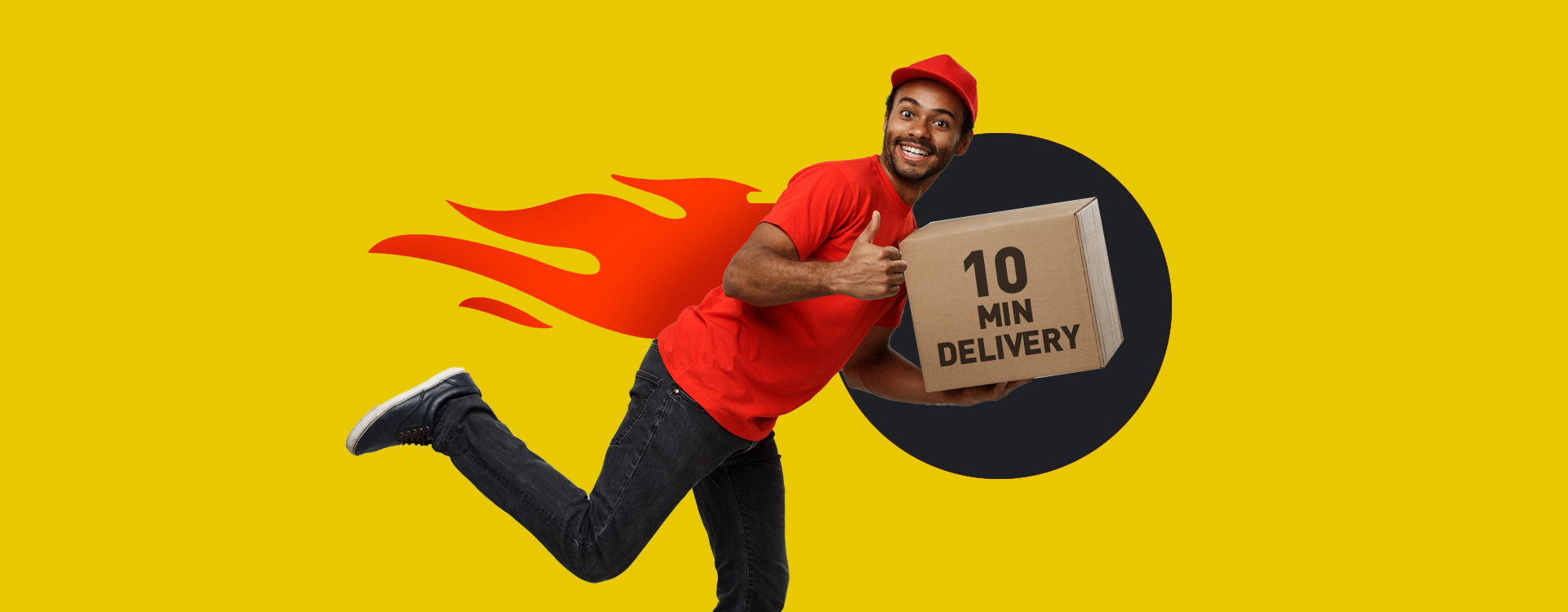Shopping groceries online which earlier looked like a luxury has become a necessity, now as people seek convenience and want to go contactless while shopping. With this, lies the onus of online grocery platforms to deliver best services which in turn have further increased a shopper’s expectations. With conglomerates and e-commerce majors jostling to dominate the online grocery space, Indians are spoilt for choices. Those online grocery startups will emerge as winners, that other than offering deep discounts can offer seamless shopping processes and faster deliveries.
Much to the likes of online pharma platforms the online grocery startups are ramping up their operations to deliver instant deliveries and want to replicate the similar ‘instant-ness’ of offline shopping. Faster deliveries, also prevent grocery startups from frequent stock-outs. According to RedSeer consulting, quick commerce is expected to grow 10-15 times in the coming five years to become a $5 billion opportunity by 2025.
How will this 10 min grocery delivery model work?
Here is a simplified process of how this 10 min delivery will work:
- The customer places an order of groceries on the app.
- After the platform receives the order, the hub nearest to the shopper’s residence is alerted of the orders, which picks and packs them.
- The app assigns a delivery partner
- Delivery executive reaches the hub to collect the order.
- The order is delivered to the customer.
Dependence on dark stores to develop faster delivery models
Online grocery platforms are shifting from the marketplace model to build dark stores or hubs in proximity to consumer’s residences as in the former model the delivery speed slows down. A dark store is a large warehouse or a network of warehouses that stocks inventory to sell directly to its consumers. Grocery startups Milkbasket and BigBasket have implemented this model.
Distribution from dark stores will help startups gain control more on quality and experience fewer stock-out scenarios.
With the click and collect model involved in dark stores, the startups get a clearer picture of stock levels and therefore have better product availability than a marketplace model. Here, the company does not need to spend on retail experience or store beautification. As a result, the cost is saved to stock more variety of items for less inventory. It improves distribution accuracy, avoids mix-ups, and solves perishability challenges, which are usual hurdles in online grocery delivery.
‘‘
According to RedSeer consulting, quick commerce is expected to grow 10-15 times in the coming five years to become a $5 billion opportunity by 2025.
Online grocery startups jumping the fast delivery wagon
Recently turned unicorn, Grofers plans to reduce the delivery time for groceries from 15 to 10 minutes as it expands its services to 10 cities in India. Similarly, Swiggy’s Instamart is expanding its delivery network to five more cities promising deliveries within 15-30 minutes. BigBasket is looking forward to ramping up its express and scheduled next-day delivery options. Food aggregator platform Zomato with its grocery delivery app is planning to deliver within 30-45 minutes.
What lies ahead for the online grocery platform to adopt faster delivery?
Online grocery platforms to adopt a faster delivery model will require setting up several dark stores or hubs and should not expect breakeven in the first quarter itself.
The ticket size will not grow initially but as the grocery platforms strive to offer faster delivery and better customer service the frequency of purchases will grow. It will eventually lower the cost of delivery and spends on customer acquisition thus, building a loyal customer base and repeat business. But initially, huge capital funds are required to invest to build infrastructure and inventory. The online grocery startups can also expect slower expansion due to increased spending on distribution centres and hubs.




